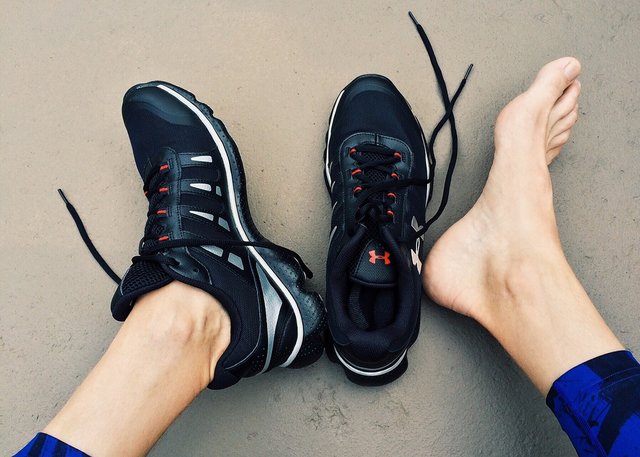Pronation is how your foot rolls from heel to toe as you walk or run. There are three different types of pronation – neutral, over, and under. The type you are depends on the natural shape of your feet and arches. How do you tell which you are though? Here’s a simple test to find out, and some suggestions on how to alleviate any associated problems.
Supination pronation test
Although many specialist running shops now offer free gait analysis, the easiest and quickest way to determine your pronation type is by doing the Wet Test. All you’ll need is a container large enough to place your foot in, some water, and a blank piece of cardboard. Here’s what you need to do:
- Fill the container with the water – about 2cms deep is enough.
- Place your foot in.
- Remove foot, shake off excess water, and place on the cardboard.
- Lift foot and analyse the imprint left behind.
The shape of the imprint indicates what type of pronation you have.
Neutral pronation
If you have a neutral pronation, the shape left behind will show a distinct ridge between the heel and the front of the foot. The ridge will be more or less half the width of the foot overall.

Overpronation
A sign of overpronation is the footprint that shows a large percentage of the entire foot. The imprint shows that the arch is very low, meaning that you’re more likely to have flat feet.
The outside of the heel strikes the ground first but as the foot rolls forward, more pressure is put on the big toes. The foot lifts off with a push from these toes – this places an excessive strain on a specific area of the foot and can lead to various other problems. Common issues with overpronators include shin splints and runner’s knee.
Pronation Shoe wear pattern: The running shoes of overpronators are likely to be worn in the middle of the heel and near the big toe. When placed on a flat surface, they may tilt inwards.

Underpronation
The imprint for overpronation will show a very narrow foot arch, showing an overreliance on the outside of the foot during walking or running.
After the heel strikes the ground, the foot rolls forward on its outer edge and pushes off the ground using the little toes. This places inordinate stress on these areas of the foot and carries an increased risk of certain injuries. Ankle sprains and plantar fasciitis are relatively common among under pronators.
Pronation shoe wear pattern: Overpronators will see wear on the outside heel and edge of their running shoes. When placed on a flat surface, they might lean outwards slightly.

Footwear for pronation
Getting the right footwear to match your pronation type is fundamental in avoiding injury and improving performance. Once you know if you’re neutral, over, or under-pronated, choose running shoes and insoles to match.
Stability shoes are the best options for the neutral pronator. They provide extra stability through side-arch supports, a firm heel, and the use of high-density foam. When combined with flat insoles, such as Enertor’s Comfort insoles, they help to significantly reduce the pressure experienced on the feet and lower body joints.
Motion-control shoes are suitable for those who overpronate. Incorporating elements made of plastic and fibreglass, this type of shoe is more rigid than alternatives – this helps to prevent the heel from turning outwards. Motion-control shoes provide more support to heel arches, meaning that less pressure is placed on the big toes. This arch support should be bolstered with appropriate insoles – Enertor’s Running insoles help to spread stress throughout the foot and decrease the risk of injury.
Cushioning shoes are the best choice for underpronators. These are generally very lightweight and flexible shoes, allowing rigid, high-arched feet a greater degree of motion. Cushioning shoes reduce the overall impact felt on the foot, but especially so on the heel. When considering insoles, select ones that are flat and have a deep heel cup. Enertor’s Heel Cup is perfect for those looking for more shock absorption around the heel and ankle.
The Wet Test is a quick way to determine what kind of pronation you have. Once you know if you’re neutral, under, or over-pronated, be sure to wear the most appropriate footwear to lower your risk of injury and improve your performance.


